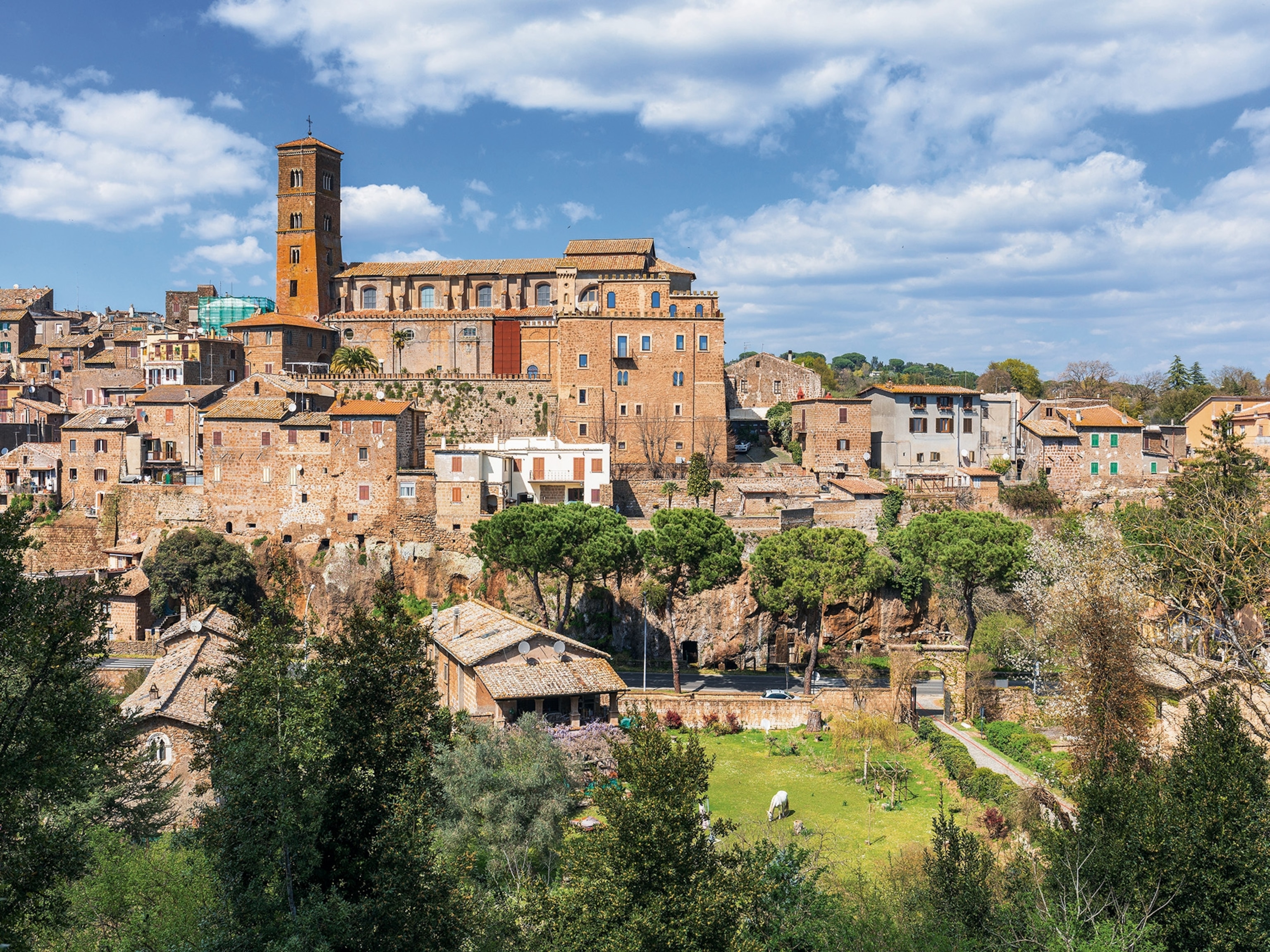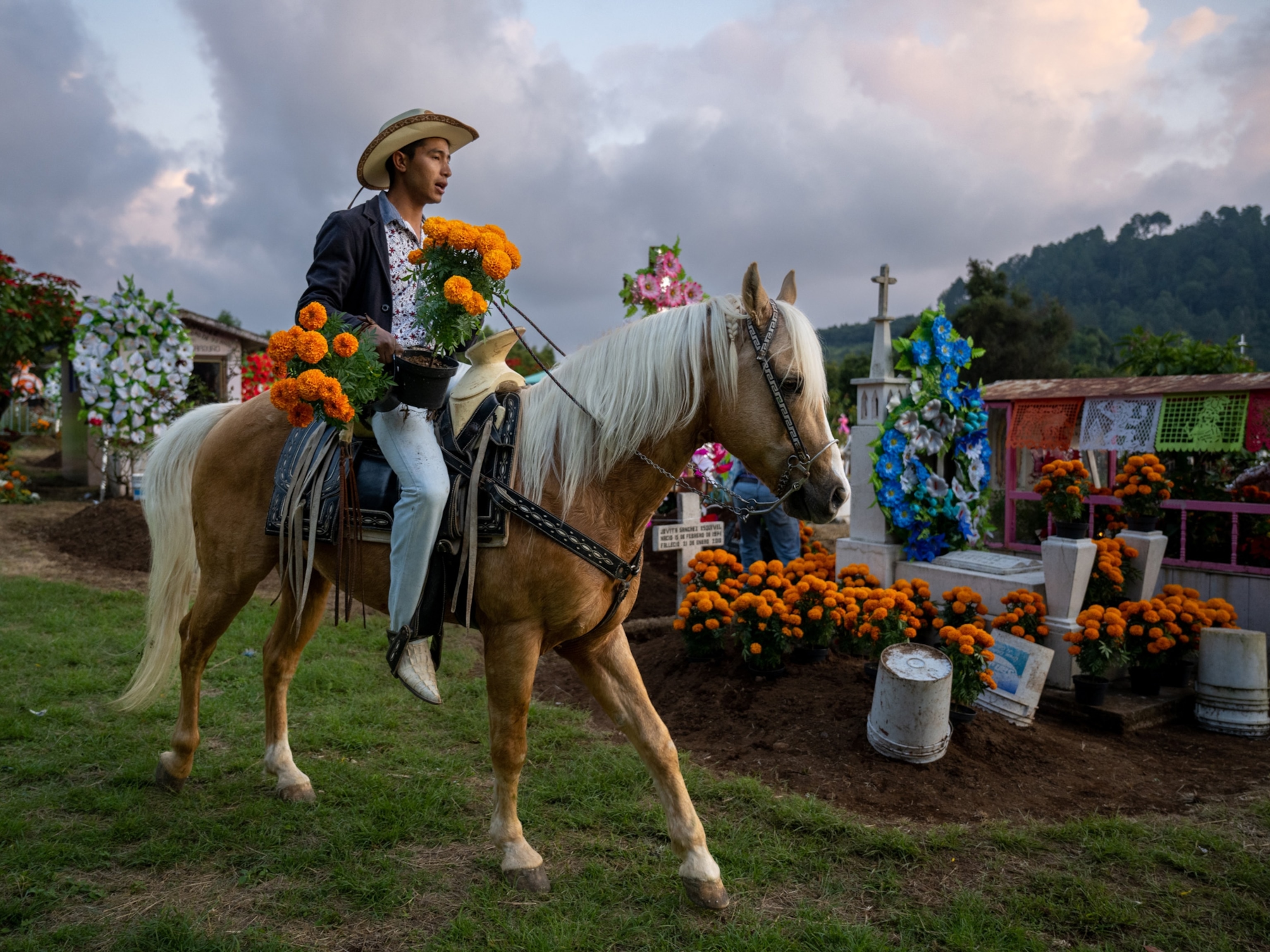
Vatican in a Bind About Santa Muerte
Church official makes first statement on the Mexican cult of Holy Death.
In 2010 I wrote a story about a new religious cult that appeared to be emanating from Mexico's terrible prisons and among members of the drug world.
It revolves around a Halloween-type shrouded skeleton, and the image seems to have been translated directly from biker art to makeshift temples throughout the country.
There were antecedents of older, rural cults devoted to a death figure—in Veracruz, especially, in a region known for its curanderos, or medicine men.
But the skeleton in medieval monk's dress, carrying a scythe, was a city thing, initially popular among people living in the underworld or on the fringes of society.
Now the cult is almost mainstream. And because in Mexico we have never seen a statue, or a doorway, or a box of tissues we didn't want to decorate, the old Grim Reaper is reincarnated in pretty robes of white gauze, pink silk, shimmering velvet, and bright sequins.
First it was a man, but eventually it appeared in its triumphant form as a woman: the Santa Muerte, or Holy Death, grim but also unconditionally yours.
In the state prison of Culiacan, Sinaloa, I interviewed a young inmate, who said: "La Muerte is always beside you—even if it's just a little postage stamp that you put up above your cot, you know that she's not going to move, that she'll never leave." She's company.
On May 8, a high-ranking Vatican official made what amounts to the Catholic Church's first public statement regarding the cult.
"It's not religion just because it's dressed up like religion; it's a blasphemy against religion," said Cardinal Gianfranco Ravasi, president of the Vatican's Pontifical Council for Culture.
It isn't the Vatican's habit to give its opinion on every passing cult that flashes across the horizon, but the Santa Muerte is special.
That's because, ghastly as the figure may seem, and weird as the Holy Death cult beliefs may sound, its leaders borrow greedily from traditional church ritual for their own services.
In Mexico, the practice of Catholicism among the poor and desperate often involved crawling long distances on one's knees or tying thorny cactus paddles to one's bare back or making promises of future penance if God's favors were received.
Although these sacrifices were not sanctioned by the Catholic Church in Rome, they continued among people who knew of no other imaginable way to change their luck.
It makes sense, then, that when the cult of the Santa Muerte sprang up among Mexicans who are still poor, still desperate in different ways and for different reasons, worship would take on familiar forms.
At the Santa Muerte's most famous shrine in downtown Mexico City, traditional rosaries are said and young men crawl on their knees for blocks, cradling the holy skeleton in their arms. Instead of lighting incense, they exhale smoke from marijuana cigarettes for the Muerte to inhale.
Even worse—from the point of view of the Catholic Church—many of the pilgrims who gather around shrines to the saint of death still see themselves as devout Catholics.
Some self-appointed "priests," claiming to be leaders of a cult that has no hierarchies or structure, have even tried to insist that their temples are part of the official church.
For the Vatican, this month's declaration constituted a delicate balancing act.
On the one hand, the cult is un-Catholic, extravagant, and sometimes horrifying. The arrest last year of eight people charged with murdering two children and a woman in the course of Holy Death worship served to confirm that the Niña Blanca (White Girl), as she is sometimes known, can be invoked in dreadful ways.
On the other hand, churches are losing their flocks at alarming rates, even in predominantly Catholic Mexico, and it may be that Rome is anxious not to alienate millions of practicing believers who might worship a different kind of saint on the side.
The statement by Cardinal Ravasi is not an official condemnation; it's a condemnation by an official. It makes the Catholic Church's position clear, but it doesn't force the faithful away.
When I began working on the subject of the Holy Death, I spent time with Enriqueta Romero, an alternately fierce and motherly woman who almost single-handedly propelled the cult to take off.
She leads a traditional rosary every month for thousands of people at her shrine in the crowded streets of downtown Mexico City. But she evangelizes for a different savior.
I asked her to explain that. No problem, Romero said: She was a devout Catholic herself, and kept her faith in the Niña Blanca separate.
As to whether Rome might take exception to the cult she was fostering, Romero switched moods. "They can just go ahead and do that," she said. "But have you seen how empty their churches are?"
Catholic followers of the Holy Death are likely to continue worshipping in their own way, no matter what anyone says.





